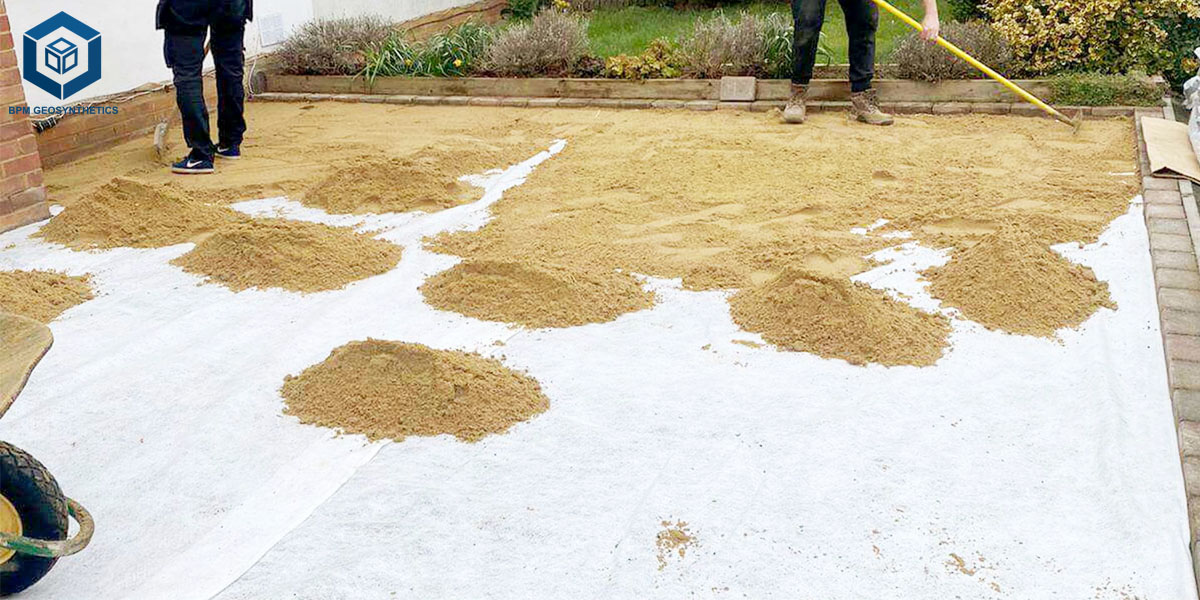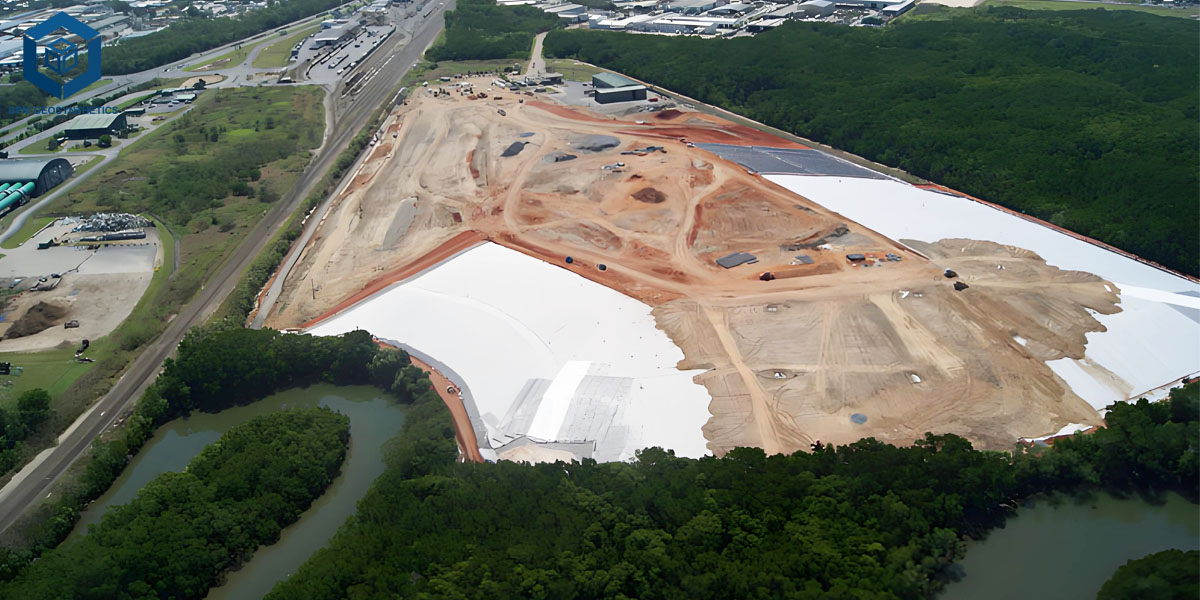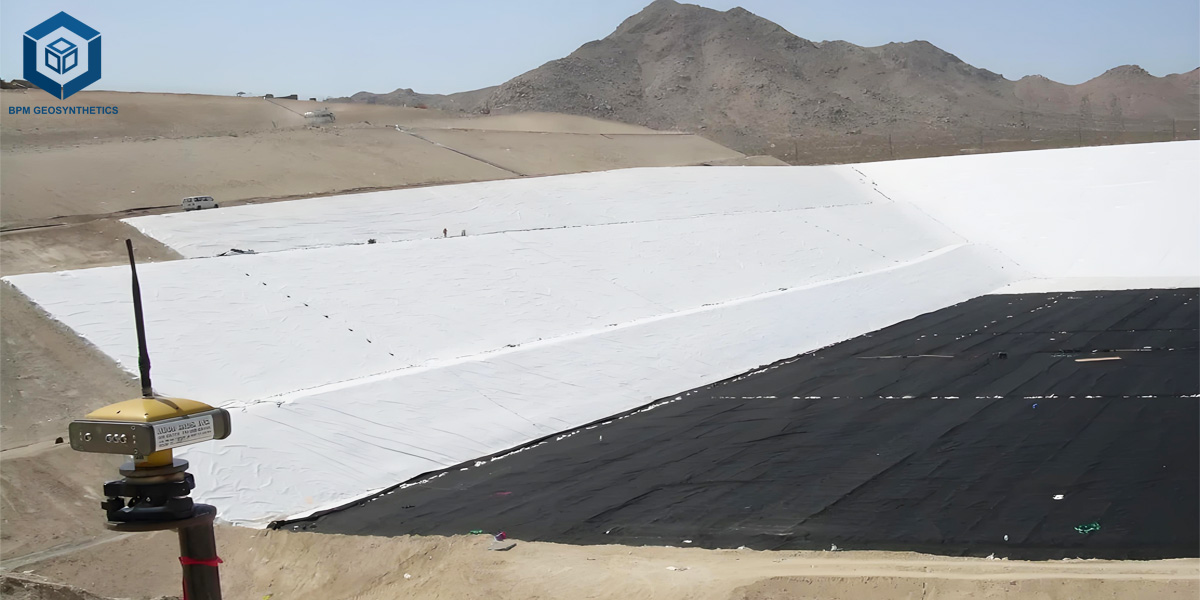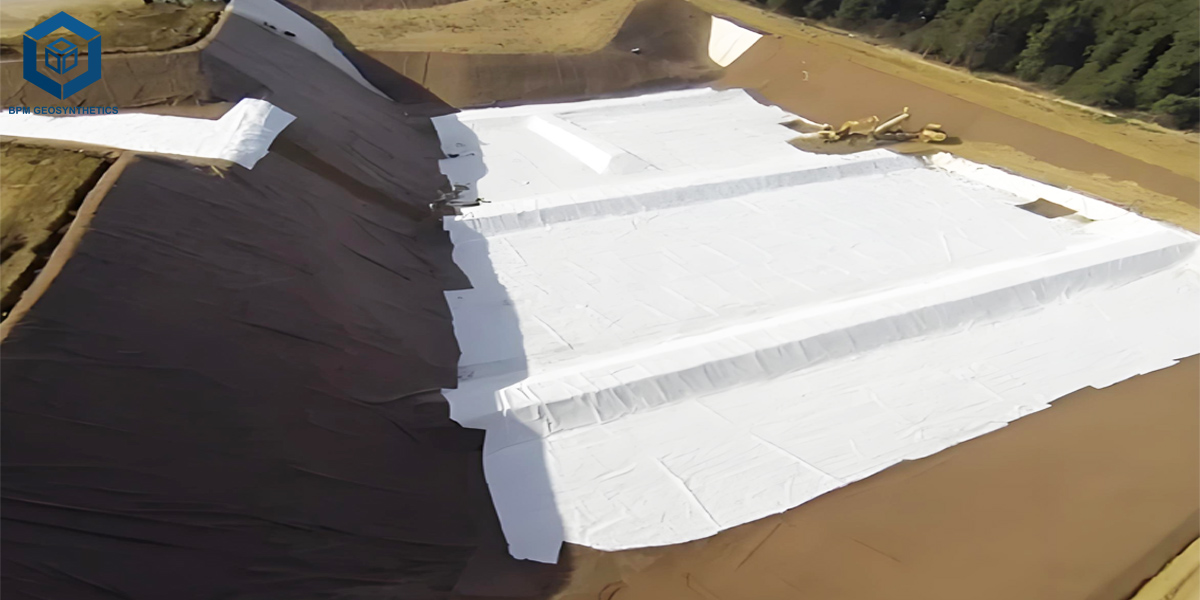Geotextile Fabric for Road Construction
Our high-quality geofabric road construction strengthens roadbeds, improves drainage, and prevents soil erosion. Ideal for highways, highways, and pavement projects, it ensures long-lasting stability, within your budget construction, and better load-bearing performance. Durable, permeable, and convenient to install, it’s the ideal answer for cutting-edge street engineering.
- Soil Stabilization: Strengthens vulnerable subgrades for safer, longer-lasting roads.
- Drainage Improvement: Prevents waterlogging and reduces upkeep costs.
- Erosion Control: Protects slopes, embankments, and roadside areas.
- High Load-Bearing: Supports heavy visitors and reduces pavement deformation.
- Easy Installation: Lightweight, flexible, and low-priced for quick mission completion.
Our top class geotextile material is especially engineered to meet the needs of current avenue building projects. By imparting top-quality soil stabilization, environment friendly drainage, and dependable erosion control, it ensures safer, longer-lasting roads and pavements. Designed for sturdiness and cost-effectiveness, this high-performance geotextile fabric helps a large vary of infrastructure applications, from highways and rural roads to embankments and industrial sites, handing over constant consequences below difficult environmental conditions.
1. Geotextile Fabric for Road Construction – Key Features & Benefits
1.1 Soil Stabilization & Reinforcement
Geotextile enhances load distribution on vulnerable or uneven subgrades, minimizing rutting and differential settlement. Helps prolong pavement existence whilst lowering restore frequency. Ideal for highways, rural roads, industrial roads, and heavy-traffic zones.
1.2 Efficient Drainage
Geotextile cloth promotes high-quality water waft thru the subgrade, stopping water accumulation and soil saturation. Reduces the threat of potholes and structural damage, decreasing long-term upkeep fees and growing street safety.
1.3 Erosion & Sediment Control
Fabric geotextile protects slopes, embankments, and roadside areas from erosion precipitated with the aid of rainwater, wind, or heavy runoff. Maintains structural integrity and supports sustainable development practices, making it appropriate for environmentally touchy areas.
1.4 Durable & Long-Lasting
Non woven geotextile fabric manufactured to face up to punctures, tearing, and extended UV exposure. Performs reliably below severe climate conditions, which include heavy rain, frost, and excessive temperatures, making sure durability for decades.
1.5 Lightweight & Flexible
Geo fabric easy to transport, handle, cut, and installation on-site. Reduces labor requirements, quickens venture timelines, and adapts nicely to irregular terrain and uneven surfaces.
1.6 Eco-Friendly & Permeable
Non woven geotextile designed to permit water permeability whilst stopping soil mixing, advertising perfect drainage barring compromising environmental standards. Supports inexperienced building practices and reduces environmental impact.
1.7 Versatile Applications
Geotextile drainage fabric suitable for a extensive vary of civil engineering projects, which include toll road construction, avenue base reinforcement, parking lots, embankments, railway ballast stabilization, and conserving structures. Customizable specs enable adaptation to a number of undertaking sizes and load requirements.
2. Geotextile Fabric for Road Construction – Technical Specifications
2.1 Geotextile Fabric for Road Construction Material
Non woven landscape fabric made from exceptional nonwoven or needle-punched polyester (PET) or polypropylene (PP) fibers, engineered for most efficient strength, durability, and resistance to environmental degradation.
2.2 Geotextile Fabric for Road Construction Weight
Ranges from 150–1000 g/m², customizable in accordance to mission requirements. Heavier non woven geotextile membrane supply greater reinforcement for highways and industrial roads, whilst lighter fabric are appropriate for rural or low-traffic applications.
2.3 Geotextile Fabric for Road Construction Width
Available in rolls from 2–7 meters, permitting insurance of giant areas with fewer seams and minimizing set up time. Custom geotextile drainage fabric widths can be produced to fit precise assignment needs.
2.4 Geotextile Fabric for Road Construction Tensile Strength
Offers up to 50 kN/m, making sure awesome load-bearing capability for heavy site visitors and structural balance below worrying conditions.
2.5 Geotextile Fabric for Road Construction Elongation
Ranges from 50–80%, geotextile filter fabric offering flexibility to accommodate soil movement, settlement, and uneven terrain except tearing.
2.6 Geotextile Fabric for Road Construction Permeability
Allows water waft quotes between 0.1–1.0 cm/s, promotion advantageous drainage whilst stopping soil mixing. Geotextile filter cloth ensures highest quality overall performance for erosion control, subgrade stabilization, and roadbed filtration layers.
3. Geotextile Fabric for Road Construction – Material & Construction
3.1 Type of Geotextile Fabric for Road Construction
Available in woven, nonwoven , or needle-punched constructions. Woven geotextiles supply excessive tensile power and dimensional stability, nonwoven fabric provide highest quality filtration and drainage, whilst needle punched geotextile choices mix power with flexibility, making them perfect for various street development applications.
3.2 Raw Materials Geotextile Fabric for Road Construction
Made from top notch polypropylene (PP), polyester (PET), or customized blends, making sure durability, chemical resistance, and long-term overall performance below harsh environmental conditions. The desire of geotextile drainage can be tailor-made to meet particular undertaking requirements, such as heavy site visitors roads, embankments, or erosion-prone areas.
3.3 Geotextile Fabric Manufacturing Process & Quality Standards
Produced the usage of superior extrusion, bonding, and needle-punching techniques, following global high-quality requirements such as ISO 9001. Each roll geotextile filter cloth is fastidiously examined for tensile strength, elongation, permeability, and UV resistance, making sure constant overall performance and reliability on-site.
4. Advantages of Choosing BPM Geotextile Fabric for Road Construction
4.1 Cost-Effective Construction
Reduces standard building fees by means of minimizing great soil preparation, stabilizing subgrades, and decreasing long-term preservation needs.
4.2 Enhanced Infrastructure Lifespan
Strengthens roads, pavements, embankments, and different civil structures, notably extending their carrier existence beneath heavy visitors and detrimental climate conditions.
4.3 Compliance with Standards
Manufactured to meet worldwide civil engineering standards, environmental regulations, and exceptional certifications, making sure dependable overall performance and safety.
4.4 Trusted via Professionals
Widely used and endorsed by means of contractors, engineers, and infrastructure builders international for its validated durability, excessive load-bearing capacity, and regular quality.
4.5 Sustainable & Environmentally Friendly
Supports eco-conscious development practices by means of stopping soil erosion, decreasing drain filter fabric wastage, and advertising acceptable drainage and water management.
5. Geotextile Fabric for Road Construction – Applications / Use Cases
5.1 Geotextile Fabric for Highway, Road, and Pavement Construction
Geo fabric cloth provides quintessential subgrade stabilization and reinforcement, decreasing rutting and uneven settlement. Enhances load-bearing potential for each mild and heavy site visitors roads, extending the provider lifestyles of highways, rural roads, and city pavements.
5.2 Geotextile Fabric for Railway Subgrade Reinforcement
Geo fabric material strengthens railway embankments and ballast layers to forestall music deformation and agreement below dynamic loads. Supports long-term tune stability, reduces preservation frequency, and improves typical safety.
5.3 Geotextile Fabric for Embankments, Slopes, and Erosion Control
Nonwoven geotextile fabric prevents soil erosion on slopes, embankments, and roadside areas precipitated with the aid of water runoff, wind, or heavy rainfall. Helps preserve structural integrity, helps slope stability, and reduces hazard of landslides.
5.4 Geotextile Fabric for Parking Lots, Airports, and Industrial Yards
Geotextile fabric under gravel improves floor balance and prevents deformation underneath repeated heavy loads. Ideal for areas with excessive site visitors density, such as industrial parking lots, airport runways, and industrial storage yards, making sure smooth, long lasting surfaces.
5.5 Geotextile Fabric for Drainage Systems and Filtration Layers
Geotextile landscape fabric acts as a dependable filtration layer, facilitating water float whilst stopping soil migration. Maintains suited drainage, protects subgrades, and reduces the hazard of waterlogging, making it appropriate for roads, pavements, and different infrastructure tasks requiring long-term durability.
6. Geotextile Fabric for Road Construction – Installation & Handling
6.1 Roll Size, Length, and Width
Geotextile fabric is furnished in rolls with customizable widths (typically 2–7 meters) and lengths, permitting insurance of massive areas with minimal seams. Proper planning of roll plan helps decrease set up time and ensures uniform performance.
6.2 Guidelines for Cutting, Joining, and Fixing
The non woven filter fabric can be without problems reduce with utility knives or shears to suit the undertaking layout. Overlapping seams via 15–30 cm and securing with pins, staples, or soil anchors ensures non-stop insurance and prevents slippage. Joining methods, such as sewing, warmness bonding, or adhesive strips, can be utilized relying on the undertaking requirements.
6.3 Recommended Installation Practices for Different Terrains
On flat surfaces, lay the non woven geotextile drainage fabric easily except wrinkles, making sure full contact with the subgrade.
On slopes or uneven terrain, keep enough overlap and invulnerable edges to forestall displacement.
Avoid sharp stones or particles under the cloth to stop punctures.
For drainage or filtration applications, make sure the material is accurate oriented according to water go with the flow direction.
6.4 Handling & Storage Tips
Keep geofabric rolls dry and covered from direct daylight earlier than installation. Handle rolls cautiously to keep away from tearing or stretching. Store on a flat floor to hold cloth integrity and stop deformation.
7. Geotextile Fabric for Road Construction – Packaging & Shipping
7.1 Roll Packaging Options
Geotextile road fabric rolls are furnished with inflexible or cardboard cores, tightly wound and securely wrapped in shielding plastic or woven covers to forestall moisture, dirt, and UV harm at some stage in storage and transportation. Packaging can be custom-made to meet assignment necessities or delivery constraints.
7.2 Transport and Storage Recommendations
Rolls have to be dealt with with care throughout loading and unloading to keep away from tears, punctures, or deformation. Store rolls on a flat, dry surface, away from direct daylight and sharp objects, to keep material integrity. For prolonged storage, maintain the rolls below cowl to forestall UV degradation.
7.3 Shipping Options and Customization Availability
BPM geo textile material can be shipped by means of container, truck, or bulk transport, relying on task dimension and location. Custom roll widths, lengths, and packaging preferences are reachable for large-scale infrastructure projects, making sure shipping effectivity and minimizing coping with problems on-site.
7.4 Customer Support
Our crew affords preparation on choosing the gorgeous packaging and delivery approach for your project, making sure the non woven geotextile filter fabric arrives in most suitable condition, equipped for immediately installation.
Summarize
The Best Project Material Co., Ltd.(BPM Geosynthetics)geotextile fabric presents most fulfilling soil stabilization, drainage, and erosion manipulate for highways, roads, embankments, and railway subgrades. Made from splendid PP or PET, it is durable, UV-resistant, flexible, and effortless to install. Trusted through engineers and contractors worldwide, BPM Geosynthetics affords a cost-effective, eco-friendly answer for long-lasting street building projects.











